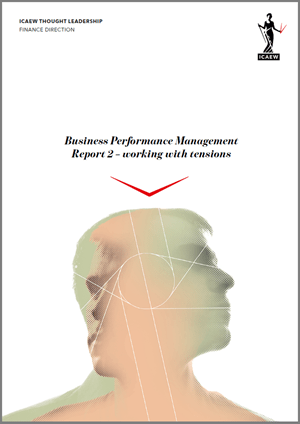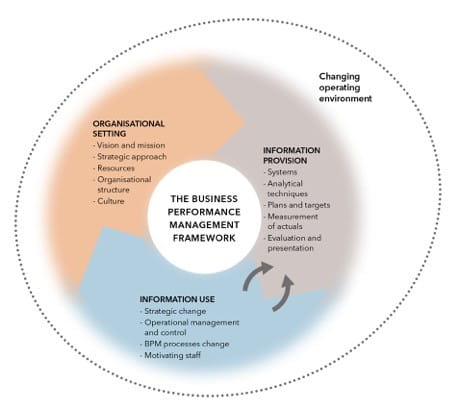Business Performance Management - working with tensions
Business performance management (BPM) is about how organisations define, assess and improve the delivery of their business goals.
How can you improve your business performance management strategy?
- We have produced two reports that allow you to examine your approach to performance management.
- Use the BPM framework to map your current processes.
- Practical advice on how to deal with tensions.

Business Performance Management reports
With these challenges in mind, ICAEW has produced two reports that provide you with an opportunity to stand back and examine your own approach to performance management. While our first report looked at approaches and tensions, our second report, Business Performance Management Report 2—working with tensions, drills down into the tensions to provide practical advice on how to deal with them.While there is no one size fits all approach, a framework can be a useful tool
To analyse business performance management, we set out its component parts in a framework against which you can map your current processes (see the BPM framework image). We hope that the framework will help you to clarify your thinking on BPM, map your current approach against our model and in doing so, identify areas of concern, and explain BPM to others in your organisation. However, in practice, it is where this framework interacts with real-world tensions, such as meeting multiple stakeholder needs, that an organisation needs to focus its energy.Working with tensions
Even if an organisation has considered the key elements of BPM and tailored them to its own circumstances, tensions will occur and need a response. During our conversations with members some tensions frequently cropped up. That is why we have focused on these tensions in our BPM2 report.
In the report we detail a number of ways to respond to the tensions. We also provide six case studies showing how BPM works in practice. BPM itself is an ongoing cycle, and an opportunity for continuous improvement. There is no perfect one-size-fits-all approach. It is about constantly aiming for a “good enough solution” through a process of trial and error. Such a demanding task calls for finance professionals with strong business knowledge who are able to exercise professional judgement. Indeed, it is in dealing with the tensions in BPM that finance professional demonstrate their mettle.
We welcome comments on the reports and in particular further case studies highlighting BPM tensions and practical ways of dealing with them. Please contact rick.payne@icaew.com with your thoughts.
Further resources: BPM tensions case studies
- Informal controls and staff capabilities - transport company
- Focusing on your key success factors - direct sales kitchen company
